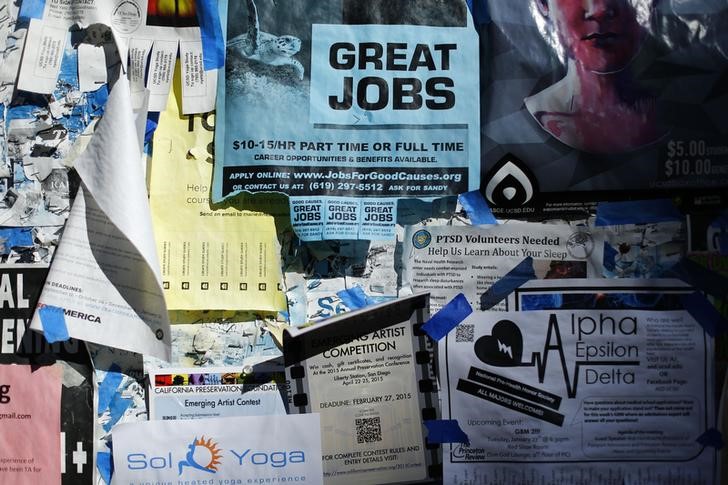By Barani Krishnan
Investing.com -- The brouhaha over what the U.S. jobs report for February will bring is over and the Federal Reserve’s wary eyes are now on the reading for consumer prices, due Tuesday. Yet, talk is growing that the central bank will be kinder with its March rate hike, helping oil markets cut some of their weekly loss.
New York-traded West Texas Intermediate, or WTI, crude settled up 96 cents, or 1.3%, at $76.68 per barrel. That helped WTI reduce its weekly loss to 3.8%. Until Thursday’s close, the U.S. crude benchmark had appeared headed for a 5% loss at least.
London-traded Brent crude settled up $1.19, or 1.5%, at $82.78. Like WTI, Brent was down 3.8% on the week.
“We have a more benign jobs number for February that could lead to a kinder Fed on rates,” said John Kilduff, partner at New York energy hedge fund Again Capital. “The only mystery now is what the inflation numbers tell us on Tuesday.”
Technical charts for WTI, at least, suggested that crude prices needed to regain the $80 level they hit earlier this week in order to resume a bullish wave.
“WTI’s relief rally from $74.80 to $77.10 is still far from any signs of bullish rebound, which needs affirmation of strong acceptance above $80.30,” said Sunil Kumar Dixit, chief technical strategist at SKCharting.com.
The United States added 311,000 jobs in February, the Labor Department said Friday, reporting a number that again beat forecasts but not as much as in January, in what could be a relief to the Federal Reserve’s task of lowering inflation amid persistently strong labor and wage growth.
Last month’s growth in so-called nonfarm payrolls comes after the outsized addition of 504,000 jobs in January. Economists had forecast a growth of 205,000 in February and 185,000 in January. In a further relief to the Fed, the unemployment rate rose to 3.6% last month from 3.4% in January.
Until Friday’s release of the latest nonfarm payrolls report, the Fed had been expected to settle on a 50-basis point hike at its next rate decision on March 22. The relatively softer growth in February payrolls versus January prompted some analysts to think the central bank might opt for a 25%-basis point hike instead, although there was not enough consensus on that.
“The unemployment rate was higher and wages were lower than expectations,” economist Greg Michalowski said in a post on the ForexLive forum. “Will the change in the calculus influence the Fed as well? Will they hold off on a 50 bp hike?”
The Fed has said that a labor market slowdown will be necessary to cool inflation that proved more stubborn than thought.
One of the Fed’s biggest challenges has been stellar jobs data as the nation’s labor market continues to stun economists with stupendous growth month after month.
While policymakers the world over typically celebrate on seeing good jobs numbers, the Fed faces a different predicament. The central bank wishes to see an easing of labor conditions that are a little “too good” now for the economy’s own good — in this case, unemployment at more than 50-year lows and average monthly wages that have grown without stop since March 2021.
Such job security and earnings have cushioned many Americans from the worst price pressures since the 1980s and encouraged them to continue spending, further feeding inflation.
Economists say monthly jobs numbers need to grow meaningfully below expectations to create some ding at least in employment and wage security which the Fed suggests are its biggest two headaches now in fighting inflation.
Inflation, as measured by the Consumer Price Index, hit a 40-year high of 9.1% in the United States during the year to June. It has moderated since, to an annualized growth of 6.4% in January, but remains well above the Fed’s target of just 2% per year. The next reading for the CPI is on March 14, Tuesday.
“Although inflation has been moderating in recent months, the process of getting inflation back down to 2% has a long way to go and is likely to be bumpy,” Fed Chair Jerome Powell said in testimony before the U.S. Congress this week. “Recent economic data, particularly inflationary pressures, have been stronger than expected.”
To clamp down on runaway price growth, the Fed added 450 basis points to interest rates since March last year via eight hikes. Prior to that, rates stood at nearly zero after the global outbreak of the coronavirus in 2020.
The Fed’s first post-COVID hike was a 25-basis point increase in March last year. It then moved up with a 50-basis-point increase in May. After that, it executed four back-to-back jumbo-sized hikes of 75 basis points from June through November. Since then, it has returned to a more modest 50-basis-point increase in December and a 25-basis-point hike in February.
Investing.com’s Fed rate monitor tool — an indicator of money market expectations for upcoming rate decisions — has assigned a 58% chance of a 25 basis point hike at the central bank’s March 22 meeting.
Also supporting oil on Friday was news that Saudi Arabia and Iran, both founding members of OPEC had re-established diplomatic ties after seven years of estrangement that led to Tehran being targeted with U.S. sanctions for suspicions of building a nuclear bomb.
Aside from being a constant geopolitics worry for the Middle East, the Saudi-Iran row had been a drag on oil prices, given the potential for a sanctioned-Iran to undermine OPEC by selling oil not tracked by the group.
